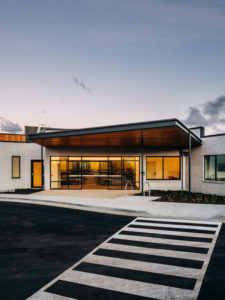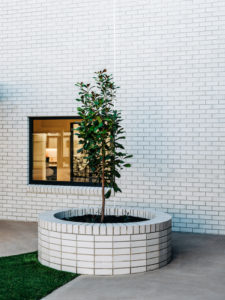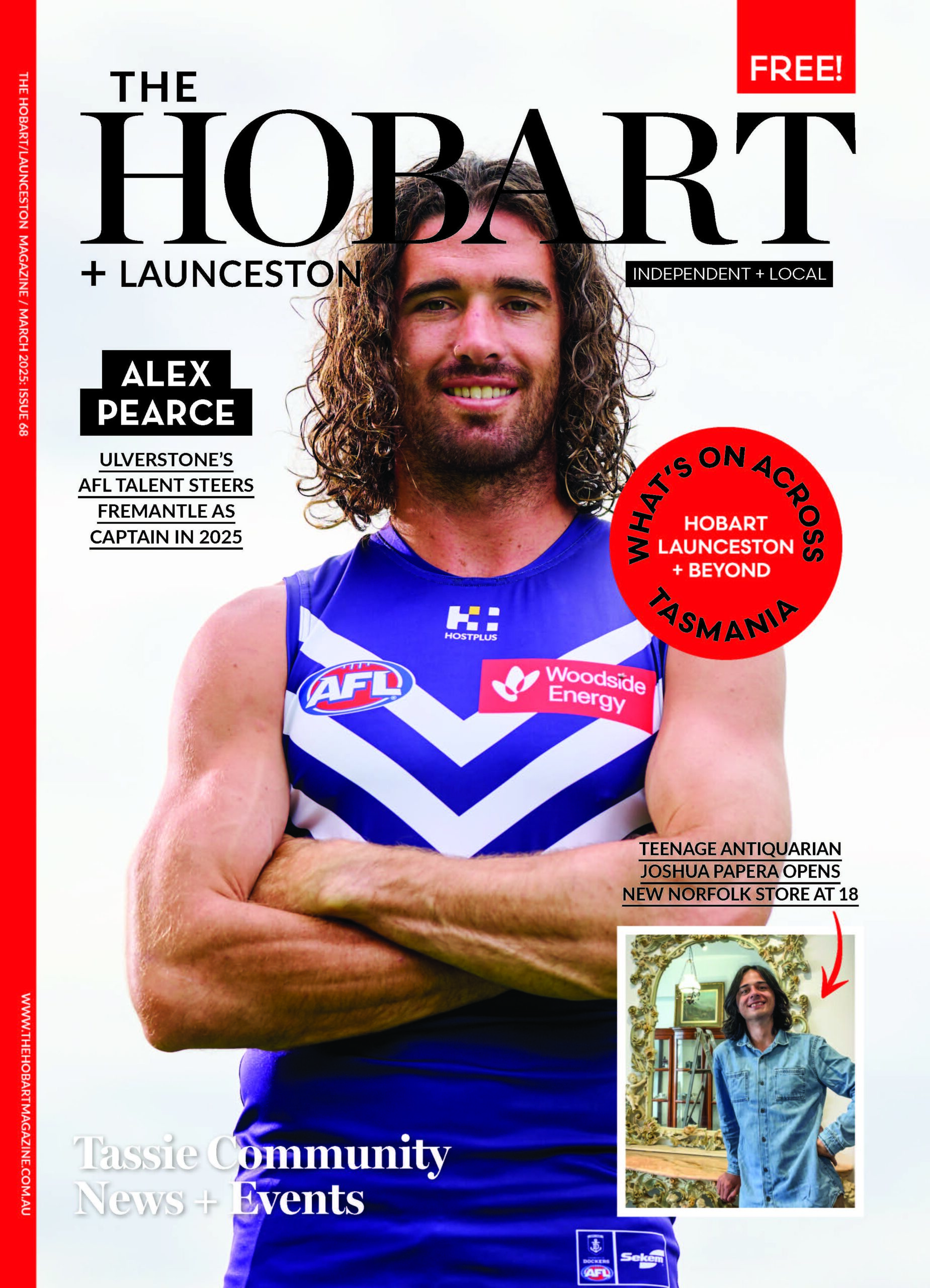Designing For Dementia: Korongee Village Opens in Glenorchy
by Stephanie Williams

Hobart architect Stephen Geason of Cykel Architecture was engaged by international firm ThomsonAdsett to collaborate on the new Korongee Dementia Village, as the local architect on the ground here. He shares insight into designing spaces for people living with dementia and how good design decisions can enhance their lives.
What design decisions have you made that are unique to Korongee Village?
The architectural language within the village has been informed by connecting the past to the future, and to the community. The concept of the village reinterprets the Australian suburban cul-de-sac and the civic village. The architectural typology of the buildings are informed by the local vernacular of the civic village and the residential home. The form of the village/com- munity buildings clearly delineates between home and civic becoming recognisable for the resident. Korongee is based on the small house model of care and consists of four cul-de-sacs – each has three homes and each home has eight bedrooms. The civic space consists of a community centre, café, grocer, hair salon and wellness centre. To create a sense of neighbourhood and home, a series of social filters has been overlaid. This starts with the intimate privacy of the bedroom progressively moving to the domestic of the shared co-housing social space into the semi public of the veranda where residents can sit and observe the theatre of the neighbourhood and determine their level of engagement. It concludes with the active engagement of the civic cul-de-sac and the village. The homes are a familiar in form, are single story with pitched roofs, verandas and front fence.
Which principles did you apply?
Within the design phase, the ThomsonAdsett design team reviewed and implemented the ten Dementia Enabling Environment Principles from the work of Professor Richard Fleming and Kirsty Bennett.
How has colour played a role?
A rich colour palette inspired by the colours of Mt Wellington/kunanyi was developed. Each cluster has its own unique landscape with a coloured brick planter box with a distinct tree at the entry, the colour then penetrates deep into the cluster. Once in the cluster, the entry sequence to each home has its own unique colour and the warmth of hydro wood clad porches. This is one of the way finding overlays applied to assist the resident to identify their own cul-de-sac and home. This is one of numerous dementia enabling design principles embedded in the village.
What can new residents and family expect from the new village?
Korongee is a purpose-built facility intended to facilitate authen- tic living for people living with dementia. The village is intended to be familiar, safe and encourage independence. Not a stair or handle rail to be found.
This is said to be a first for Australia – why do you think Hobart has been a pioneer in this?
The credit for the inception to realisation of Korongee as a village for people living with dementia sits with visionary CEO Lucy O’Flaherty, Glenview Community Care, their board and team, and in particular Glenview’s Project Manager Donna Lashma.
What does the name Korongee mean?
We know the Butler family owned the land in 1890, built the homestead and named it Korongee. Some speculate Emma Butler named the property in memory of Mt Korong where she grew up. I have also been told “Korongee” is an Aboriginal word for canoe.
Has this been an area of interest for you and your practice prior to Korongee Village?
As myself as an architect, and a value shared with ThomsonAdsett, I place a strong emphasis on utilising design sensibility and architectural skills to contribute and assist those in need to gain a more inclusive quality of life via a sensible and considered design approach to the built environment. I have been interested and working in the design for dementia space and the senior living sector for over a decade. ThomsonAdsett iscelebrating 50 years of working in these sectors. My interest wassparked when working with now-Emeritus professor Andrew Robinson in 2004. Andrew is the cofounder of the Wicking Dementia Research and Education Centre established in 2008 and has been a great support and wealth of knowledge for myselfand my practice. In 2015, I was awarded a Churchill Fellowshipto travel to Scotland and Northern Europe to conduct meaningful research into dementia-friendly environments within residential care. The fellowship was truly a life changing experience has allowed me to establish national and international working relationships in the design for dementia space.
Photography by Adam Gibson.



